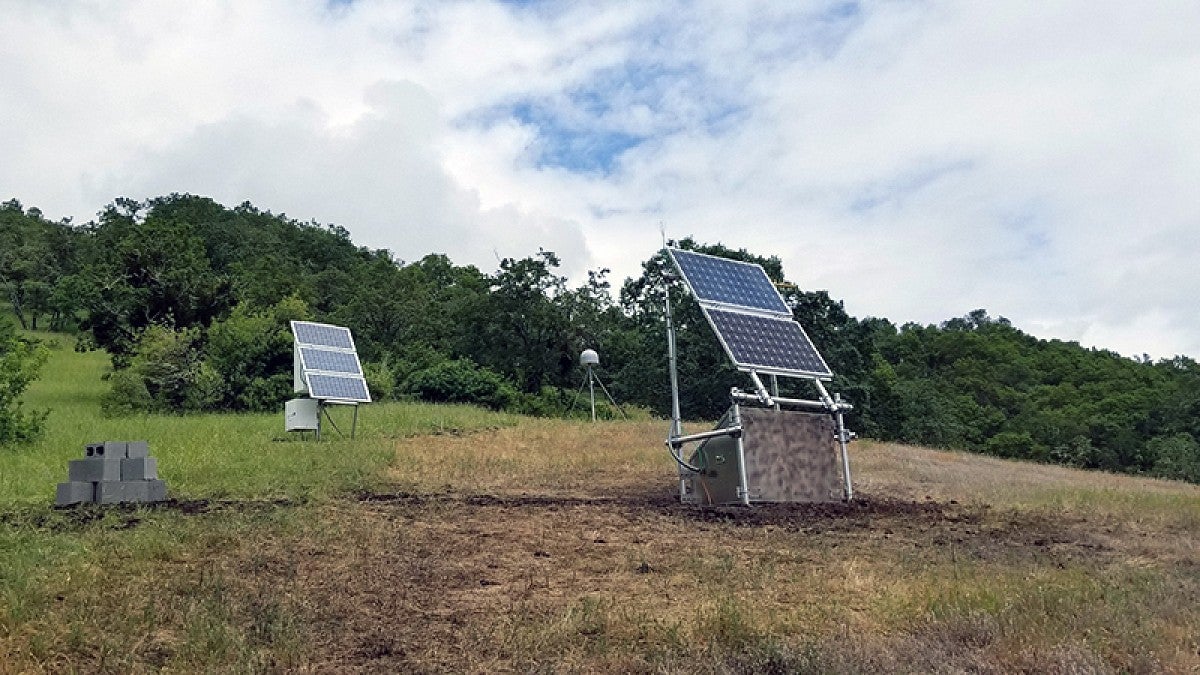Efforts to continue upgrading Oregon’s portion of the West Coast Earthquake Early Warning System will get a $1.6 million boost from new federal funding announced by the U.S. Geological Survey.
With the funds, University of Oregon team members in the early warning system, known as ShakeAlert, will finish placing seismometers at coastal stations, mainly in Southern and Central Oregon, said Leland O’Driscoll, project manager of the Oregon Seismic Network, which is based in the Department of Earth Sciences. They also will expand real-time GPS monitoring and improve cybersecurity.
The UO is a partner in the Pacific Northwest Seismic Network with the University of Washington in the USGS-led ShakeAlert program, which is being developed to provide seconds to minutes of warning about imminent shaking after an earthquake is detected. The biggest risk in the Pacific Northwest is a potential magnitude 9 earthquake in the 620-mile-long Cascadia subduction zone that runs along and just off the coast.
The USGS announced Monday that $12.5 million will be shared by seven universities and a university-governed nonprofit to support operations in the first year of a two-year, $21.1 million package approved earlier this year by Congress.
“We all know the question is not if, but when the next major earthquake will hit the Pacific Northwest, so the time to prepare for the worst is now,” said U.S. Rep. Peter DeFazio, a Democrat. “With this latest release of federal funds, we are very close to a sufficient buildout of ShakeAlert that will give Oregonians advanced warning when a significant earthquake takes place, meaning we can save lives, reduce injuries and minimize infrastructure damage.”
DeFazio added that he “will keep fighting in Congress to ensure the federal government remains a good partner in this effort.”
The new funding is critical to Oregon's efforts to advance the region's coverage.
“We will be able to fill in a major gap in the GPS array along the central Oregon Coast and the coastal mountain range,” O’Driscoll said. “GPS is important to ensure that large-magnitude earthquakes are accurately measured. Seismometers alone have difficulty with quakes equal to or exceeding magnitude 7.5. This is an especially important improvement for the Cascadia Subduction Zone.”
In research published in May, the UO’s Diego Melgar and Gavin P. Hayes of the USGS National Earthquake Information Center in Colorado reported that GPS data as early as 10 to 15 seconds into an earthquake can indicate the event’s final magnitude.
ShakeAlert began incorporating GPS technology in the 2017-19 budget cycle in a partnership with Central Washington University and UNAVCO, a nonprofit university-governed consortium based in Colorado.
The UO also will continue to expand community partnerships, said Lucy Walsh, outreach and engagement coordinator for the Oregon Seismic Network. Her position, based in the Department of Earth Sciences, becomes fully funded under the new grant.
Partnerships are in place with the Eugene Water and Electric Board; cities of Albany, Grants Pass and Gresham; South Fork Water Board; UO’s Central Power Station; Linfield College; Beaverton School District; Linn-Benton Community College; Portland State University; Oregon Department of Transportation; Rogue Valley and Lane councils of government; Portland Fire and Rescue; and Providence Medford Medical Center. The Central Lincoln People’s Utility District, which serves portions of four coastal counties, also will be joining the system.
The partners are integrating early warning capabilities into their operations, either through automated responses in infrastructure or internal alerting notifications.
“ShakeAlert is a sensible way to prepare for earthquakes,” said U.S. Rep. Kurt Schrader, another Oregon Democrat. “I am pleased these funds will be put to immediate use filling in gaps in the system by locating more sensors on the central coast through an expansion of the University of Oregon’s partnership with the Central Lincoln Public Utility District.”
The UO also will strengthen cybersecurity against data breaches in Oregon’s monitoring system.
“We will also improve the real-time data telemetry of the system,” he said. “This means that we can build telemetry hubs, which are where multiple stations are gathered at a single site.”
One of the hubs will be atop Prince Lucien Campbell Hall, the UO’s tallest building.
Real-time public warnings from ShakeAlert for Oregon will begin when the state’s seismic array is at least 75 percent complete, Walsh said. It now is at 58 percent. The UO team also needs to complete sufficient public education and training, as required by the Oregon Office of Emergency Management, and establish and vet a mechanism for making public alerting viable, such as a cellphone app.
UO efforts on campus are a collaboration between the team in the Department of Earth Sciences and the Institute of Policy Research and Engagement, Museum of Natural and Cultural History, Information Services, Network Startup Resources Center, Campus Planning and Facility Management, Safety and Risk Services, and School of Journalism and Communication.
“These campus partnerships occur via technology and related expertise and by research and support of public-facing efforts,” said Doug Toomey, who heads the UO’s ShakeAlert team. “We anticipate that these partnerships also will benefit ALERTWildfire and other projects by the Oregon Hazards Lab.”
—By Jim Barlow, University Communications


